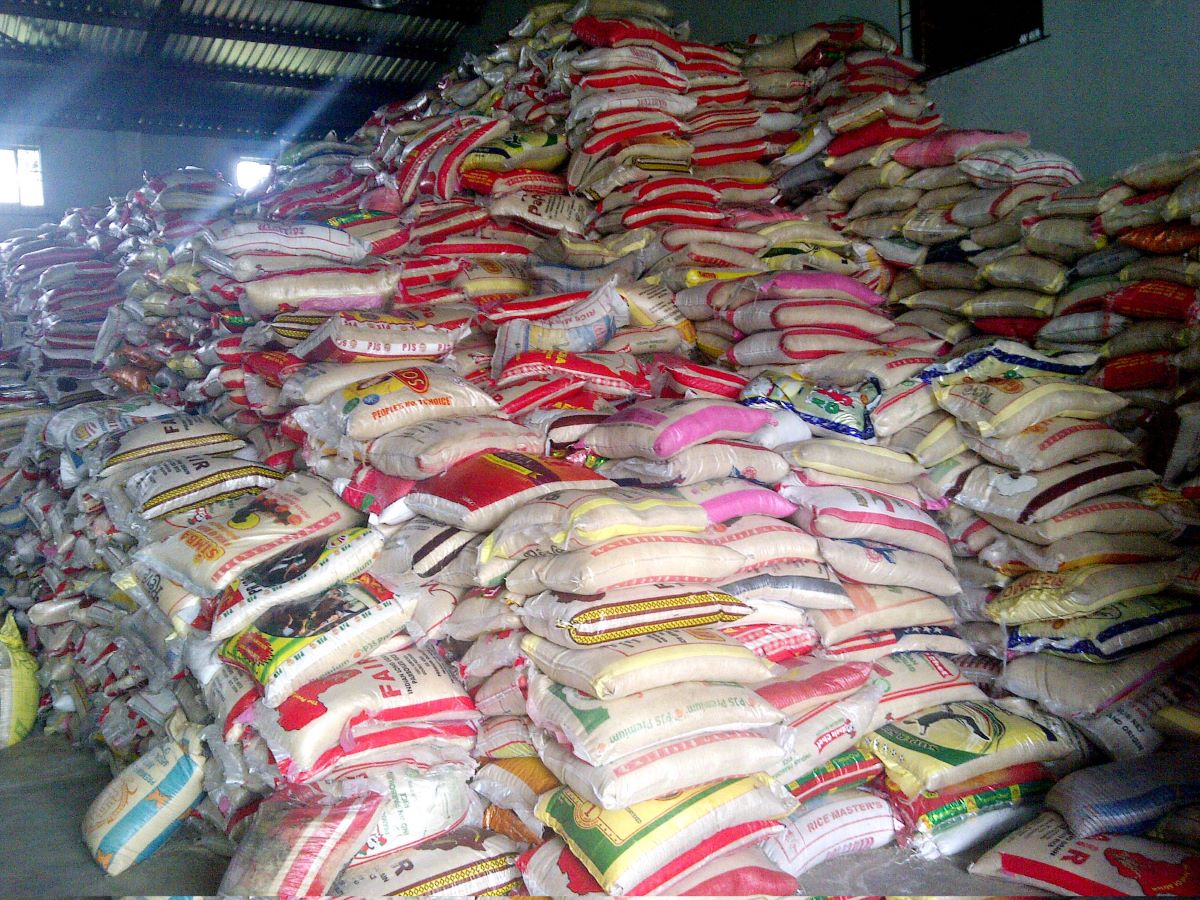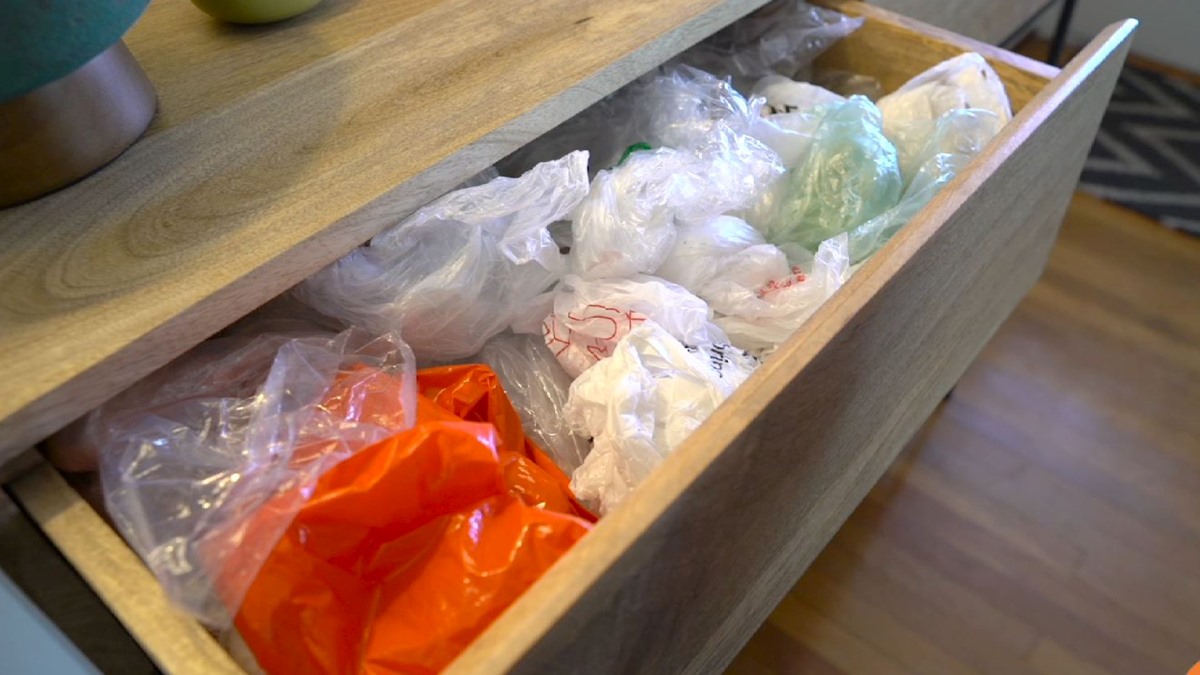

Articles
How To Store Large Bags Of Rice
Modified: February 26, 2024
Learn the best way to store large bags of rice with our helpful articles. Keep your rice fresh and prevent spoilage with these storage tips.
(Many of the links in this article redirect to a specific reviewed product. Your purchase of these products through affiliate links helps to generate commission for Storables.com, at no extra cost. Learn more)
Introduction
Storing large bags of rice properly is crucial to ensure the long-term quality and freshness of this staple food. Whether you’re a rice enthusiast stocking up on different varieties or a business owner in the food industry, understanding the best storage practices is essential. Improper storage can lead to spoilage, insect infestation, and loss of nutritional value.
In this article, we will walk you through the step-by-step process of how to store large bags of rice effectively. From creating the ideal storage environment to handling and labeling the bags, we will cover all the necessary details to preserve the rice’s quality and extend its shelf life.
So, let’s dive in and explore the best practices for storing large bags of rice!
Key Takeaways:
- Proper storage environment is crucial for maintaining rice quality. Factors like temperature, humidity, and airflow play a key role in preserving the freshness and nutritional value of large bags of rice.
- Maintaining hygiene, proper filling, sealing, and labeling of rice bags are essential for long-term storage. Regular monitoring, stock rotation, and usage ensure minimal waste and maximum freshness.
Read also: 14 Best Large Storage Bags For 2024
Proper Storage Environment
Creating the right storage environment is crucial for maintaining the quality of your rice. Here are some essential factors to consider:
- Temperature: Rice should be stored in a cool and dry environment. Ideally, the temperature should be below 70°F (21°C) to prevent the growth of bacteria and discourage insect infestation. Avoid storing rice in areas that are prone to high humidity or extreme temperature fluctuations.
- Humidity: Rice is highly sensitive to moisture and can absorb excess humidity, resulting in clumping and spoilage. Aim for a humidity level of 50-60%. Consider using a dehumidifier if the storage area is prone to high moisture levels.
- Airflow: Ensure proper ventilation in the storage area to prevent the accumulation of stale air and moisture. Good airflow helps maintain the quality and freshness of the rice.
- Light: Exposure to direct sunlight or artificial light can degrade the quality and nutritional value of rice. Store large bags of rice in a dark area or use opaque containers to protect it from light.
- Pest control: Take preventive measures to keep pests like rodents and insects away from the storage area. Use traps, repellents, or pest control products as needed to ensure the rice remains uncontaminated.
By creating the proper storage environment, you can protect your rice from factors that could compromise its quality, taste, and nutritional value.
Cleaning and Preparing the Storage Area
Before storing large bags of rice, it’s essential to clean and prepare the storage area properly. This helps prevent contamination and ensures a clean environment for the rice. Follow these steps:
- Clear out the area: Remove any existing items or debris from the storage area to create space for the rice bags.
- Clean surfaces: Thoroughly clean the storage surfaces with a mild detergent or disinfectant. Pay close attention to corners, shelves, and any crevices where dirt or pests might hide.
- Dry the storage area: Ensure that the storage area is completely dry before placing the bags of rice. Dampness can lead to mold growth or spoilage.
- Check for pests: Inspect the storage area for any signs of pests or infestation. If you notice any pests or their droppings, take appropriate measures to eradicate them before storing the rice.
- Repair any damage: If there are any cracks or gaps in the walls, floors, or shelves, repair them to prevent pests from entering or moisture from seeping in.
By cleaning and preparing the storage area, you create a hygienic and safe space for storing your large bags of rice. This helps maintain the integrity and quality of the rice for an extended period.
Choosing the Right Containers
When storing large bags of rice, choosing the right containers is crucial for maintaining its freshness and preventing any damage. Here are some considerations when selecting containers:
- Airtightness: Opt for containers that are airtight or have a tight-fitting lid to prevent air and moisture from entering. This helps preserve the quality and extend the shelf life of the rice.
- Material: Look for containers made of food-grade materials such as plastic, glass, or metal. These materials are durable, safe, and do not interact with the rice, ensuring that it remains uncontaminated.
- Size: Choose containers that can comfortably hold the amount of rice you intend to store. Avoid overfilling the containers as it may lead to spillage or pressure on the seal.
- Transparency: If using plastic containers, opt for opaque or tinted ones to protect the rice from exposure to light. This prevents potential degradation of quality due to light exposure.
- Stackability: Consider containers that are stackable to save storage space and maintain organization.
- Labeling: Select containers that have a smooth surface for easy labeling. This helps in identifying the type and date of the stored rice, ensuring proper rotation.
Remember to clean the containers thoroughly before use to remove any dust or residues that may affect the rice’s quality. Additionally, ensure that the containers are completely dry before filling them with rice to prevent moisture buildup.
By choosing appropriate containers, you can effectively store your large bags of rice while maintaining their freshness and quality over time.
Filling the Bags of Rice
When it comes to filling the bags of rice, it’s important to ensure proper handling and hygiene to maintain the quality of the rice. Follow these steps to fill the bags correctly:
- Inspect the bags: Before filling, carefully inspect the bags to ensure they are clean, intact, and free from any contaminants or pests.
- Consider bag liners: If desired, consider using food-grade bag liners to provide an additional barrier against moisture and pests. These liners can be inserted inside the bags before filling.
- Weigh the rice: Use a scale to measure and portion the desired amount of rice for each bag. This helps ensure consistency and accuracy in filling.
- Fill the bags: Carefully pour the pre-measured rice into the bags, avoiding spillage or overfilling. Leave a small amount of headspace at the top of each bag to allow for proper sealing and handling.
- Smoothen and level out: Once filled, gently shake or tap the bags to settle the rice and create an even surface. This helps in proper sealing and efficient storage.
Take care not to damage the bags during the filling process and avoid any contact with the rice using unclean hands or tools. Maintaining hygiene is essential to prevent contamination and preserve the quality of the stored rice.
By following these guidelines, you can ensure that the bags of rice are properly filled, maintaining the proper portioning and quality of the rice for future use.
Store large bags of rice in a cool, dry place to prevent moisture and pests. Use airtight containers or resealable bags to maintain freshness and prevent spoilage.
Read also: 14 Amazing Large Freezer Bags For 2024
Sealing and Labeling the Bags
Sealing and labeling the bags of rice is an important step in proper storage and organization. Here’s how to ensure the bags are adequately sealed and labeled:
- Sealing the bags: Depending on the type of bags you are using, there are various methods to seal them effectively. If the bags have built-in resealable closures, ensure they are tightly sealed. Alternatively, you can use heat-sealing equipment or bag clips to secure the bags tightly. The aim is to create an airtight seal to prevent air, moisture, and pests from entering.
- Labeling the bags: Proper labeling helps you keep track of the type and expiry date of the rice. Use permanent markers or adhesive labels to clearly write down the essential information on the bags, such as the type of rice, date of storage, and any other relevant details. This ensures easy identification and allows for proper rotation of the rice stock.
- Consider additional protection: For added protection, you may choose to place the sealed bags of rice into larger containers or bins. This provides an extra layer of defense against pests and helps keep the bags organized.
By sealing the bags securely and labeling them accurately, you can protect the rice from external elements and ensure that it stays fresh and organized throughout its storage period.
Storing the Bags of Rice
Now that you have properly sealed and labeled the bags of rice, it’s time to store them in the designated storage area. Here are some tips for effective storage:
- Arrange the bags: Place the bags of rice in a neat and organized manner, ensuring that they are stable and not at risk of falling or being damaged. Arrange them in a way that allows for easy access and visibility.
- Stacking: If you have multiple bags of rice, consider stacking them to save space. However, ensure that the stack remains stable and doesn’t compromise the integrity of the bags at the bottom.
- Keep away from the floor: Store the bags of rice off the floor to prevent any potential moisture damage. Use pallets or sturdy shelves to elevate them and improve airflow.
- Avoid direct contact: Keep the bags of rice away from walls, pipes, or any other sources of moisture or contaminants. Leave sufficient space between them and other items to allow for proper ventilation.
- Monitor temperature and humidity: Regularly check the storage area’s temperature and humidity levels to ensure they remain within the ideal range. Make adjustments as needed to maintain optimal conditions for rice storage.
- Regular inspection: Periodically inspect the bags of rice for any signs of damage, pests, or spoilage. If you notice any issues, take immediate action to address them and prevent further damage.
By storing the bags of rice properly, you can maximize their shelf life, maintain their quality, and ensure easy access when you need them.
Monitoring and Maintaining Quality
Once the bags of rice are stored, it’s important to monitor and maintain their quality to ensure that they remain fresh and free from any issues. Here’s how you can effectively monitor and maintain the quality of the stored rice:
- Regular inspections: Schedule regular inspections of the stored bags of rice to check for any signs of spoilage, pests, or damage. Look for mold, discoloration, or unusual odors that may indicate potential issues.
- Rotate stock: Practice the “first in, first out” (FIFO) method to rotate your stock. This means using the oldest bags of rice first and placing newly purchased or stored bags at the back. This helps ensure that the rice is consumed before reaching its expiration date.
- Address issues promptly: If you notice any problems such as pests, mold, or damaged bags, take immediate action to address them. Remove affected bags and take measures to prevent the issue from spreading to the rest of the stock.
- Temperature and humidity control: Monitor and maintain the proper temperature and humidity levels in the storage area. Regularly check the conditions and make necessary adjustments to ensure they remain within the recommended range.
- Prevent pest infestation: Continue to implement measures to prevent pests from infesting the storage area. Regularly check for any signs of infestation and take preventive actions such as using pest control products or maintaining cleanliness.
- Practice good hygiene: When handling the bags of rice, make sure to maintain good personal hygiene. Wash hands thoroughly before touching the rice bags to prevent contamination.
By actively monitoring and maintaining the quality of the stored rice, you can ensure that it remains fresh, safe, and ready for consumption over an extended period.
Rotating and Using the Rice
Properly rotating and using the rice from your storage is crucial to prevent food waste and ensure that you always have fresh supplies on hand. Here’s how you can effectively rotate and use the stored rice:
- First in, first out (FIFO) method: As mentioned earlier, practice the FIFO method when it comes to using the rice. Whenever you need rice for cooking or consumption, make sure to use the oldest bags first. This ensures that you’re consuming the rice before it reaches its expiration date and maintains a constant rotation of your stock.
- Check quality before use: Before using any bag of rice, inspect it for any signs of spoilage, pests, or damage. Look for discoloration, foul odors, or any other abnormalities. If you notice any issues, discard the bag and use a different one.
- Proper storage after use: After using a bag of rice, ensure that it is securely sealed before returning it to storage. This preserves the quality and freshness of the remaining rice and prevents the risk of contamination.
- Regularly review stock: Regularly assess your rice stock to determine if any bags are approaching their expiration dates. Plan your meals and usage accordingly to ensure that all bags are used before reaching their expiry to avoid food waste.
- Consider portioning: If you find it challenging to consume large bags of rice within a reasonable time frame, consider portioning them into smaller containers or bags for easier use. This helps in maintaining the long-term quality of the rice and ensures that you’re using smaller quantities as needed.
- Explore different rice varieties: Take the opportunity to explore and experiment with different rice varieties in your cooking. This allows you to enjoy a variety of flavors and textures while effectively utilizing your rice stock.
By implementing a proper rotation system and regularly using and monitoring your stored rice, you can minimize waste and enjoy the freshest rice possible for your meals.
Frequently Asked Questions about How To Store Large Bags Of Rice
Was this page helpful?
At Storables.com, we guarantee accurate and reliable information. Our content, validated by Expert Board Contributors, is crafted following stringent Editorial Policies. We're committed to providing you with well-researched, expert-backed insights for all your informational needs.















0 thoughts on “How To Store Large Bags Of Rice”